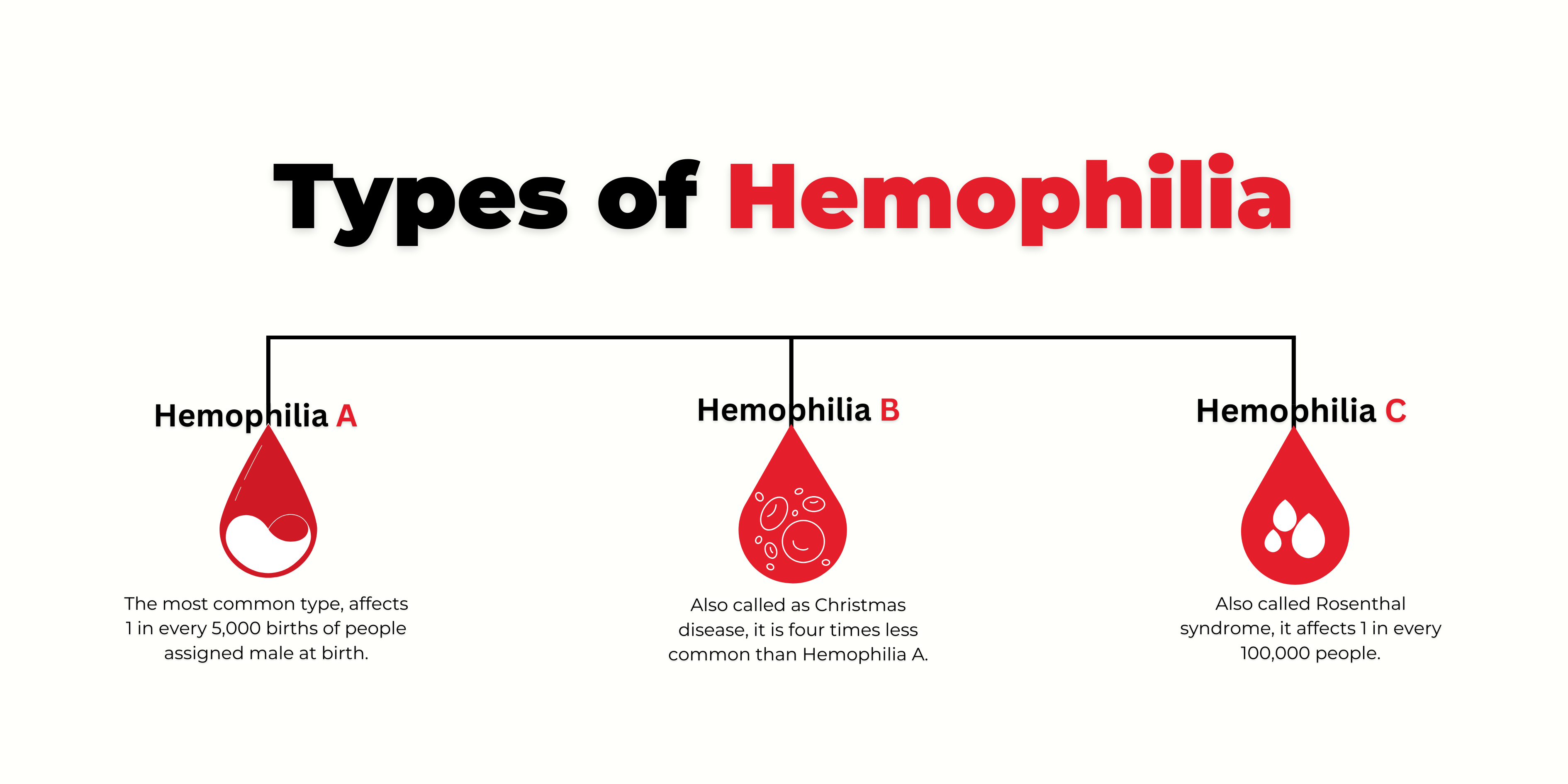Context:
Haemophilia has long posed significant health and socio-economic challenges in India due to underdiagnoses, limited access to treatment, and reliance on reactive care. Recent advancements in treatment, including regular clotting factor replacement and newer non-factor therapies, have made it possible to prevent bleeds entirely, drastically improving patient outcomes.
About Hemophilia:
· Hemophilia is a genetic bleeding disorder where blood doesn’t clot properly.
· Caused by deficiency of clotting factors, leading to prolonged or spontaneous bleeding.
· Primarily affects males; females are usually carriers.
· Inherited, though some cases arise from new genetic mutations.
· Clotting factor deficiency: Body lacks essential proteins for clotting.
Types of Hemophilia:
a) Hemophilia A: Factor VIII deficiency (most common).
b) Hemophilia B: Factor IX deficiency.
c) Hemophilia C: Factor XI deficiency; rare and affects both genders.
· Bleeding can occur in joints, muscles, or brain, requiring prompt treatment.
Shift from Reactive to Preventive Care:
- Traditionally, haemophilia management in India relied on on-demand therapy, where treatment is given after a bleed occurs. This approach often fails to prevent long-term joint damage and disability. In recent years, however, the focus has shifted toward prophylaxis, or regular replacement therapy, aimed at preventing bleeds before they happen.
- This marks a paradigm shift from merely treating haemophilia to envisioning a future of "zero bleeds". Newer therapies are also moving beyond simple replacement, aiming to rebalance or restore the body’s clotting system entirely, giving patients a chance at a near-normal life.
- However, despite an estimated 1 to 1.5 lakh haemophilia cases in India, only around 29,000 patients are officially diagnosed, highlighting a serious gap in awareness and healthcare access.
Benefits of Prophylactic Treatment:
Prophylaxis is globally regarded as the gold standard in haemophilia care. Its key benefits include:
- Preventing joint damage: Regular replacement keeps clotting factor levels stable, reducing spontaneous bleeds and long-term deformities.
- Improving quality of life: Children can attend school and play, adults can work and socialize, leading to better physical and mental well-being.
- Reducing healthcare burden: Fewer emergency hospital visits and long-term complications reduce overall treatment costs.
Developed nations report 90% of haemophilia patients on prophylaxis, achieving near-normal life expectancy. In India, however, the adoption remains low, though some states have begun offering prophylaxis to children under 10.
The Way Forward:
To fully realize the benefits of prophylaxis, India must:
- Expand diagnostic facilities at the grassroots.
- Ensure affordable access to clotting factor therapies.
- Promote policy-level support and public awareness.







